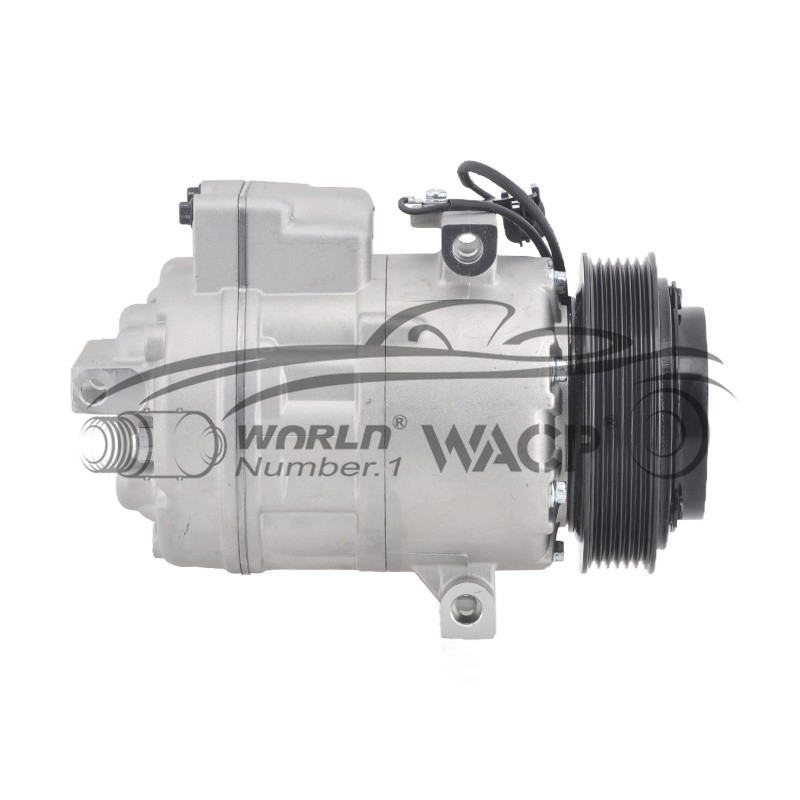| Sign In | Join Free | My qualitytoyschina.com |
|
- Home
- Products
- About Us
- Quality Control
- Contact Us
- Get Quotations
| Sign In | Join Free | My qualitytoyschina.com |
|
Brand Name : WNRLN
Model Number : WXHY095
Place of Origin : Guangdong, China
MOQ : Negotiable
Price : Negotiable
Payment Terms : Western Union, L/C, T/T, MoneyGram, PayPal
Supply Ability : 50000pcs per month
Delivery Time : 10-30 days
Packaging Details : Neutral packing /WNRLN packing/Customized packing
Certification : SGS/ISO9001
Type : AC Compressor & Clutch
Car make : For Hyundai SantaFe2.0/2.2 2010-2017
Voltage : 12V
Model : VS18
Grooves : 6PK
Color : Sliver
OEM : 977012B700/977012B750/977014D811
Auto AC Compressor For Hyundai Santa Fe HCC VS18 97701-2B700 6PK 2005-15 12V Air Conditioners
Parameter:
| Model Number |
WXHY095
|
| Type |
Air conditioner compressor & clutch
|
| Car Model |
For Hyundai Santa Fe
|
| Compressor model |
VS18 |
| Voltage |
12V
|
| Grooves |
6PK
|
| OEM |
977012B700/977012B750/977014D811
|
| Year Model |
2010-2017
|
When installing an automotive air conditioning compressor, it is not uncommon for there to be some level of noise. However, if the noise is excessive or unusual, it could indicate a problem with the compressor. Here are some steps to detect and repair compressor noise:
1. Visual Inspection: Start by visually inspecting the compressor for any obvious signs of damage, such as leaks, loose components, or worn-out belts. Check all the connecting lines and fittings as well.
2. Listening Test: Listen carefully to the noise produced by the compressor. Pay attention to the type of noise (grinding, squealing, rattling, etc.), the duration, and whether it occurs consistently or intermittently. This will help you identify the potential source of the problem.
3. Pressure Testing: Connect pressure gauges to the high and low-pressure sides of the air conditioning system. Start the engine and turn on the air conditioning. Monitor the pressure readings and compare them to the manufacturer's specifications. If the pressures are too high or too low, it could indicate a problem with the compressor.
4. Vibration Analysis: Excessive compressor noise can sometimes be caused by excessive vibration. Use a vibration analyzer to measure the level of vibration in the vicinity of the compressor. Excessive vibration can be caused by a misalignment of the compressor, worn-out motor mounts, or damaged internal components.
5. Lubrication Inspection: Check the compressor's lubricant level and quality. Low or contaminated lubricant can lead to increased friction and noise. If necessary, drain and replace the lubricant according to the manufacturer's recommendations.
6. Belt and Pulley Inspection: Examine the belt and pulley for any signs of wear, such as cracks, fraying, or misalignment. A loose or damaged belt can cause noise and affect the performance of the compressor. Replace or adjust the belt as needed.
7. Compressor Replacement: If all else fails and the noise persists, it may be necessary to replace the compressor. Consult with a professional technician who can help determine if a compressor replacement is needed.
Please note that these are general guidelines, and it is always recommended to consult with an automotive air conditioning specialist or a qualified technician for a proper diagnosis and repair of compressor noise.


4 steps to diagnose a car air conditioning compressor problem:
Step 1: Start the engine and turn on the A/C to the highest setting. This will activate the air conditioning compressor, which will draw refrigerant from the evaporator at low pressure, compress it, and send it to the condenser at high temperature and pressure.
Step 2: Listen for any unusual noises. Inspect the clamps, fixing points, hoses, and lines for breaks, cracks, missing nuts or bolts, and vibrations transmitted from the engine to the cabin. Check the belt, clamping device, tensioner pulleys, and clutch for wear, as they can cause unusual noises. If no obvious issues are found, consult a qualified technician to further diagnose the problem.
Step 3: Check for cool air coming from the air vents. Make sure the cooling fans operate when the air conditioner is on. Clean or replace the cabin air filter if necessary. Remove any debris, such as leaves, bugs, or dirt, that could obstruct airflow through the condenser.
Step 4: Inspect for visible leaks under the car. Look for any signs of refrigerant leakage, such as oily stains or puddles. If a leak is detected, it is recommended to seek professional assistance to properly diagnose and repair the issue.
|
|
2010-2017 For Hyundai SantaFe2.0/2.2 2010-2017 Auto AirCon Compressor WXHY095 Images |